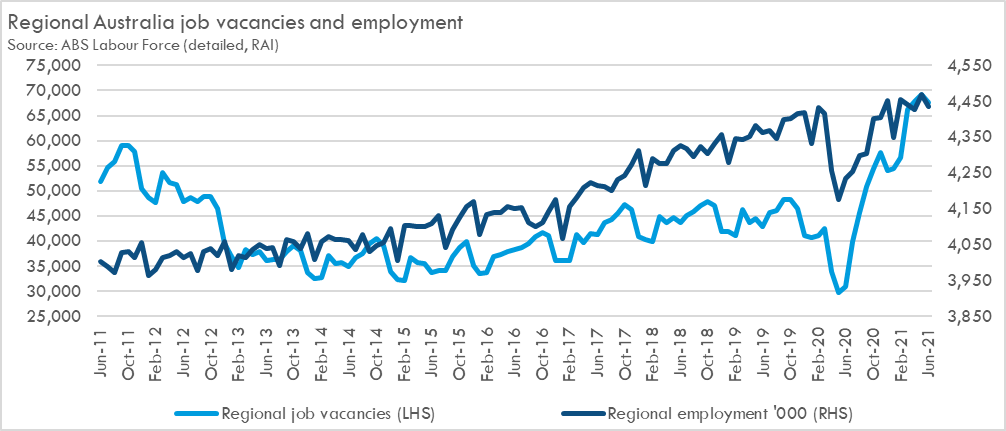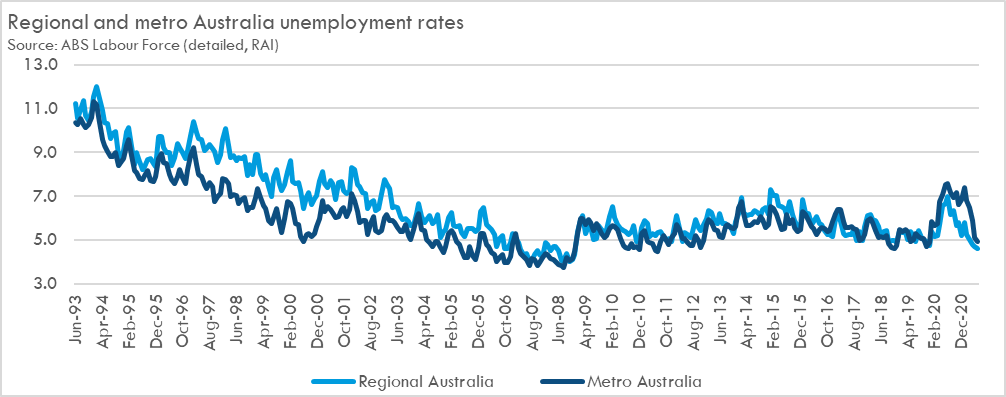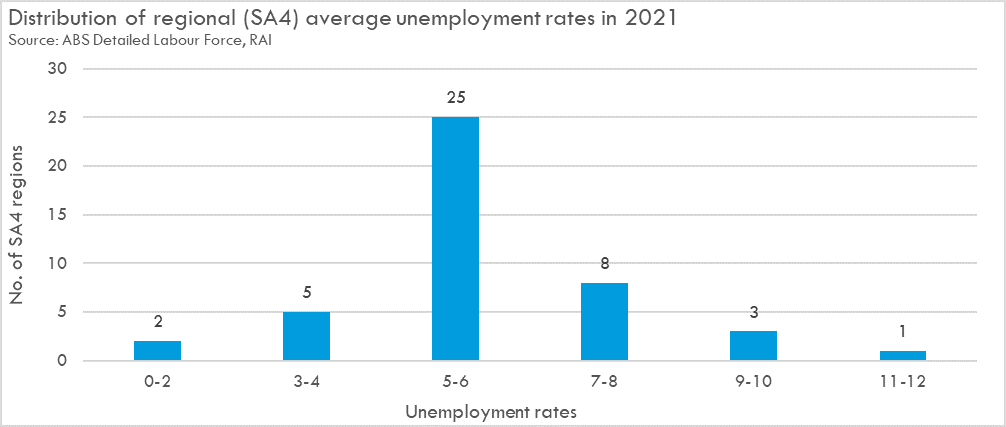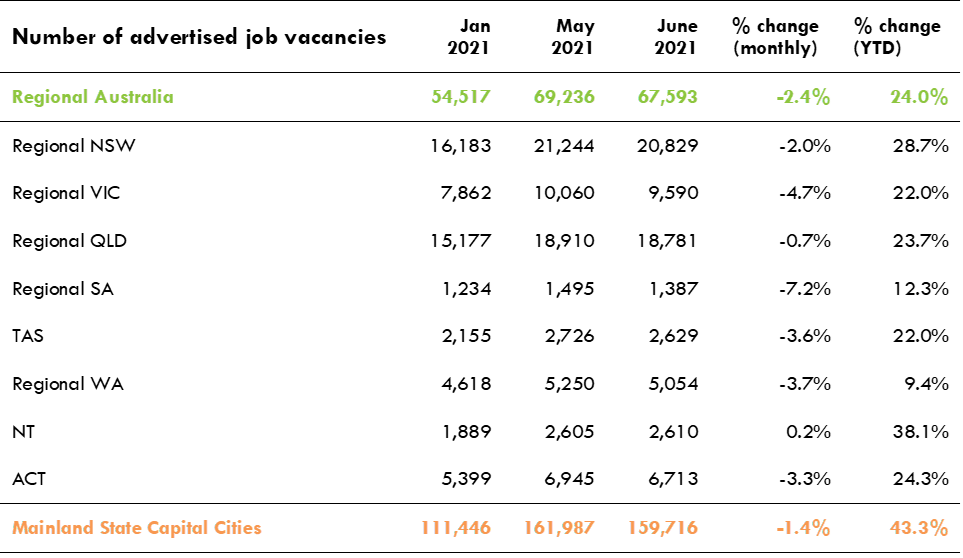Regional job vacancies edged lower by just 2.4 per cent in June 2021, though the overall level of demand for labour across regional Australia remains near record levels. A total of 67,600 jobs were advertised across regional Australia during the month, still well above the high 10 years ago of 59,000 during the mining construction boom.
This month’s regional vacancies are in a much more diverse group of regions and occupations than during the mining boom. Around 75% of this month’s regional vacancies are skilled – Certificate 4 or above – confirming the long term trend of the increasing professionalisation of regional labour markets.
Policymakers are monitoring the Australian labour market very closely in the context of the current long-tail (or third wave) of the COVID-19 pandemic. When the national labour market reaches certain milestones – in terms of wages growth and unemployment rates – this will trigger major shifts in monetary and fiscal policy. Namely an increase in the official interest rate and changes in federal budget settings.
Recent outbreaks in the eastern capitals and Adelaide have triggered another series of lockdowns which will no doubt delay the reaching of labour market milestones.
Regions and their labour markets have been much less affected by the virus itself, but if the current Sydney restrictions continue it will impact on regional tourism, and potentially heighten labour shortages by restricting mobility of workers within the state.
In the pandemic thus far, regional labour markets have performed very differently to capital city labour markets, and have provided a stabilising force to the national economy. We expect the overall dynamics outlined below to continue, and with the regional labour force accounting for over one third of the nation’s total labour force, these dynamics are and will continue to be important drivers in the national situation.
Regional labour markets have rebounded strongly after the height of the pandemic – just about recouping the momentum that had existed prior to its onset.
What is becoming increasingly apparent about the regional Australian labour market – in this long tail end of the pandemic – is that it is now running into supply constraints. Up until this latest update, job vacancies had grown in each successive month in 2021. In contrast, actual levels of employment in regions looks to have hit a ceiling back in December 2020 (of around 4.4 million employed persons) and have remained there since

With fixed supply and increasing demand, the high levels of internet vacancies are a sign of increasing frustration among regional employers with filling existing jobs, due to the closed international border as much as genuine job creation. In particular, it is likely that regional employers who aren’t finding workers through the usual local channels are turning to the internet to advertise more widely, thereby driving these monthly vacancies to record levels.
Looking at the labour market in terms of unemployment, policymakers are looking for the national unemployment rate to be sustained at below 5 per cent before embarking on major shifts in policy settings. The performance of the regional Australian labour market represents an ‘upside risk’ that these shifts might occur earlier. While the national unemployment rate fell below 5 per cent in June, this had already occurred in regional Australia back in April and it was down to 4.6 per cent in June 2021 (in original terms).

Average unemployment across regional Australia is low but there are marked differences across the country. Most regions have actually had average unemployment rates (thus far in 2021) greater than 5 per cent, however the regions with the lowest unemployment rates include some key population centres:
- NSW’s Central West – 1.7 per cent
- Riverina – 1.8 per cent
- Mackay-Isaac-Whitsunday region – 2.6 per cent
- Geelong – 3.0 per cent
- Toowoomba – 3.2 per cent

Across regional Australia, only four regions avoided a decline in job vacancies in the month of June – the latest levels better characterised as unchanged from the previous month:
- Regional Northern Territory with 2.9% more vacancies in June 2021 (807) than in May 2021 (784)
- Far North Queensland up by 0.3% (5,398 compared to 5,380)
- Gold Coast up by 0.3% (5,419 compared to 5,402)
- Blue Mountains, Bathurst & Central West just about unchanged at 1,968 in June compared with 1,966 in May 2021.
- Dubbo & Western NSW down by 0.3% (1,652 compared with 1,657)
Growth over the year to date has still been significant. The top five regions with the biggest increases over this period are:
- Darwin up by 39.9%
- Blue Mountains, Bathurst & Central West NSW up by 37.5%
- Dubbo & Western NSW up by 35.9%
- Regional NT up by 34.4%
- Newcastle & Hunter up by 33.6%

SOURCES The Internet Vacancy Index is updated monthly by the Department of Education Skills, Employment and Business (lmip.gov.au/default.aspx?LMIP/GainInsights/VacancyReport). The RAI has an interactive Regional Job Vacancy map of the data showing vacancies in 37 regions across Australia (Regional Jobs Vacancy Map).